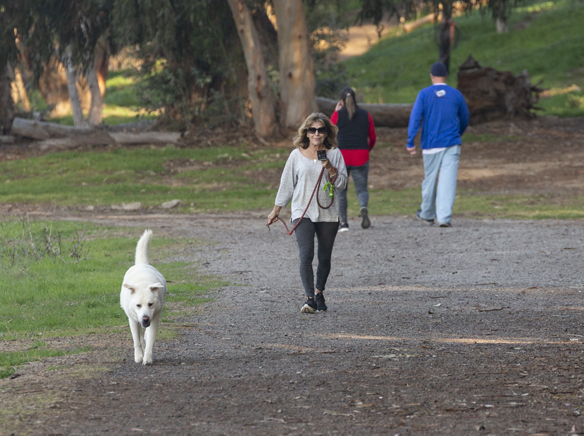Second part in a series
Gum Grove is a nature park between the Hill region of Seal Beach and the Los Cerritos Wetlands (entrance on Avalon Drive north of Crestview Avenue). It is considered Seal Beach city property. The park may have a richer history than most know.
Recently, the city of Seal Beach put up signs advising the public that digging is not allowed in Gum Grove Park.
What follows is a brief history of the park and the surrounding area. According to the “Cultural Resources Element” of Seal Beach’s General Plan, the term Gabrielino encompasses several tribes of indigenous people who lived in what would become Seal Beach.
The tribes in the area along the San Gabriel river all the way up to San Gabriel mission became known collectively under Spanish occupation as Gabrielino “Indians” in the 1500s and were made to cease many cultural practices.
Matthew Teutimez, a professional biologist and member of the Kizh (pronounced: keech) tribe of the Gabrielino, said that archeologists place the first residents of this area at about 12,000 to 15,000 years ago.
He also said, based on the park’s geography and location, there is a high likelihood of finding artifacts or “resources” in this land.
“Check this out,” Teutimez said, “you bring food with you when you go fishing, right? That’s standard human behavior that you’re going to bring food with you.”
Furthermore, “much of the food of yesteryear, of our ancient families, it had to be processed, it had to be prepared and those preparation utensils, you’re not going to lug those stone tools from your home site all the way to the river, to whatever water body, you’re going to store them next to that water body.”
Therefore “always around our water bodies you have a potential for all these stored items.”
Add to this the fact that you have natural shade on a hill from which you can survey the land, he said, and his ancient ancestors were almost guaranteed to frequent Gum Grove Park.
Teutimez said he can trace his genealogy back to Nicolás José who, according to historian Steven Hackel, lived in the San Gabriel mission and was one of the first of the Gabrielino Indians baptized there in the 1700s.
Not to mention he led a rebellion against the mission in 1785.
All of Seal Beach is located on land that was owned, after the Spanish mission period, by Mexico until the 1840s, according to the Cultural Resources section of Seal Beach’s General Plan.
According to a plaque along Hellman Ranch Trail, running between Gum Grove and Heron Pointe to the northeast, the land, called Rancho Los Alamitos at the time, was then granted to D.A. Stearns.
In the 1880s, Stearns sold the land to the Bixby family, who Teutimez’ grandfather knew, and according to Hugh Tyler who lived on Hellman Ranch (see interview at ourlosal.tv) to banker I.W. Hellman.
Hellman thus ended up owning the land just north of what would become Old Town Seal Beach, according to Larry Strawther, author of “Seal Beach: A Brief History.”
This places his ranch property squarely on land that includes Gum Grove Park between the 1880s and 1960s.
Hence, the footpath leading from the park to behind Heron Pointe is called Hellman Ranch Trail.
One of the Ranch Trail plaques reads: “Hellman’s ranch house stood on the north end of [what was then called] Landing Hill until the early 1960s,” though I.W. Hellman himself died in 1920.
It appears therefore very likely that the park, which is literally part of the north face of the Hill, was used by the Hellman family and ranchers.
Hellman properties still owns a small strip of land on the wetlands.
Seal Beach was incorporated in 1915 and, according to an article written by Strawther, the Hill neighborhood began development in 1952. Native artifacts on display behind Heron Pointe were found, according to a plaque there, around the time when the Hill became suburbs.
It is reasonable to assume that the land Gum Grove Park sits on has been a part of human history since peopled lived around the San Gabriel river thousands of years ago.
Not until the 1950s though did it become what it is today, a public nature park for residents of Seal Beach and tourists to enjoy.
During much of the Hellman Ranch period, the land where the Navy base is located on Anaheim Bay was called Anaheim Landing (see historical marker at Seal Beach Boulevard and Electric Avenue).
By the mid-60s around the time the ranch closed, Hill resident Barbara Wright says, the area had been re-dubbed Bullet Hill, perhaps for its location by the relatively new Naval munitions depot.
Next installment: replanting in the park.












